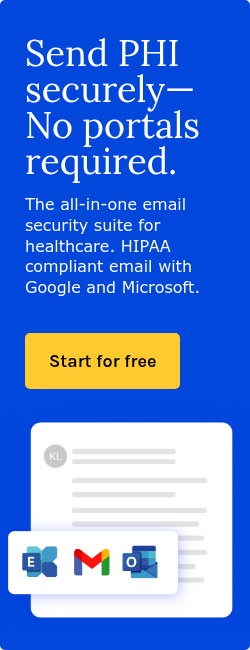7 min read
Safeguarding military health information: From battlefield to base hospital
Gugu Ntsele March 25, 2025

“The Department of Defense (DOD) administers a statutory health entitlement (under Title 10, Chapter 55, of the U.S. Code) through the Military Health System (MHS),” explains the Congressional Research Service in their 2024 Military Health System Report. “The MHS offers health care benefits and services through its TRICARE program to approximately 9.5 million beneficiaries composed of service members, military retirees, and family members. Health care services are available through DOD-operated hospitals and clinics, referred to collectively as military treatment facilities (MTFs), or through civilian health care providers participating in the TRICARE program.”
Furthermore, “DHA administers all MTFs worldwide. Generally, these facilities are located on or near a U.S. military base.” The report adds, “There are three types of MTFs that provide a range of clinical services depending on facility size, mission, and level of capabilities: (1) medical centers, (2) hospitals, and (3) ambulatory care centers. MTFs are typically staffed by military, civil service, and contract personnel. In 2023, there were 736 MTFs, with 135 located overseas.”
Securing sensitive patient data in military healthcare settings requires navigating the Health Insurance Portability and Accountability Act (HIPAA) and the structure of Military Treatment Facilities (MTFs). HIPAA establishes national standards to protect patient health information, ensuring confidentiality, integrity, and accessibility. In MTFs, where healthcare is delivered through a combination of military, civil service, and contract personnel, compliance with HIPAA is important to safeguarding data across different systems and staff roles.
The Defense Health Agency (DHA), which oversees all MTFs, implements protocols for data handling, access controls, and cybersecurity measures to prevent unauthorized access and breaches. Additionally, information shared with civilian providers through the TRICARE network must also adhere to HIPAA regulations.
The importance of secure communications in military healthcare
Military health facilities operate under scenarios that differentiate them from civilian healthcare providers. These include:
- Coordination across multiple facilities spanning domestic and international locations
- Communication between civilian contractors and military medical personnel with varying security clearances
- The need to securely transfer medical records during deployments, relocations, or patient transfers
- Management of sensitive information regarding service-related conditions that could impact military readiness
- Potential operation in harsh environments with limited infrastructure
As noted in the NIH research article Improving Patient Safety with the Military Electronic Health Record, "The Military Health System (MHS) enhances our nation's security by providing health support for the full range of military operations and sustains the health of all those entrusted to its care. From state-of-the-art hospitals and clinics, to battlefields and forward-deployed temporary medical facilities, MHS personnel worldwide dedicate themselves to supporting and delivering the best possible health care for America's Armed Forces, military retirees, and military families."
Understanding HIPAA requirements in the military context
While military treatment facilities (MTFs) operate under Department of Defense (DoD) authority, they remain bound by HIPAA regulations when handling patient information. The Privacy Rule and Security Rule components of HIPAA establish requirements for protecting PHI that must be integrated into military healthcare communications:
45 CFR § 164.312 provides technical safeguards required by HIPAA
- Encryption: All electronic PHI must be encrypted during transmission (in transit) and when stored (at rest). Military health systems must implement FIPS 140-2 validated encryption algorithms that meet DoD security standards.
- Access controls: Systems must incorporate authentication mechanisms that verify the identity of all users accessing PHI. Military environments typically require stronger controls than civilian counterparts, including Common Access Card (CAC) integration.
- Audit capabilities: Logging systems must record all access to PHI, including who accessed information, when it was accessed, and what actions were performed.
- Integrity controls: Mechanisms must be in place to prevent unauthorized alteration or destruction of PHI, especially in environments where communications may be targeted.
- Transmission security: Communications containing PHI must be protected against unauthorized interception, particularly relevant for deployed medical units or ships at sea.
45 CFR § 164.308 provides administrative requirements set by HIPAA
- Risk analysis and management: Regular security risk assessments must identify potential vulnerabilities specific to military operations and environments.
- Workforce training: All personnel, including rotating military staff, must receive appropriate training on handling PHI and understanding HIPAA requirements.
- Contingency planning: Systems must include backup procedures and disaster recovery plans that account for military-specific scenarios.
- Documentation: Policies and procedures must be thoroughly documented and regularly updated to reflect changing military operations and environments.
As emphasized in a 2025 systematic review on electronic health records in military healthcare: "Military healthcare systems necessitate specialized medical care to cater to the distinct health needs and challenges encountered by military personnel, including combat injuries, mental health issues, and the repercussions of deployment. It is imperative for military healthcare systems to guarantee easy accessibility to healthcare services for national guard and reservist roles, veterans, and their families, irrespective of their location or deployment status."
Related: HIPAA in the Military Health System
Electronic health records as a foundation for secure communications
The Department of Defense has implemented electronic health records (EHRs) that support secure communications. As the NIH research article states, “The MHS information technology systems enable doctors, nurses, technicians, and administrators to document patient care during military operations, and to establish, maintain, and access EHRs at any time. They also track medical supplies and equipment to assure that critical logistics systems respond to demand in real time."
The DoD's implementation of EHRs provides lessons for securing all forms of healthcare communications, “Because military service members and their families are a highly mobile patient population, the EHR makes a significant contribution to patient safety through its ability to make information available at the point of care."
This same principle applies to secure email and digital messaging systems, which must guarantee that authorized providers can access PHI when needed while maintaining security controls.
Research from the systematic review emphasizes the importance of this approach, stating, "The integration of EHRs in military healthcare systems offers the potential to revolutionize medical practices within these specialized contexts. By replacing traditional paper-based records with digital systems, EHRs enable healthcare providers to access comprehensive patient information in real-time, regardless of their location. This accessibility can prove crucial, particularly in military deployments or emergency situations where rapid access to accurate medical data can enable efficient diagnosis, treatment, and monitoring of military personnel and significantly impact patient outcomes."
Lessons from Department of Defense’s electronic health record implementation
The Department of Defense's experience with implementing secure electronic health records provides insights for securing all forms of healthcare communications. As the NIH research article notes, "Personal information captured by [the EHR] is protected using multiple layers of security. Authorized users are permitted to access only that level of information necessary to perform their roles in the delivery of care. Audit trails record the identity of any user who accesses or modifies any record or information stored in the system."
These same principles apply to email and digital messaging systems, which must incorporate, "Efficient, secure, and readily accessible communication among providers [to improve] the continuity of care and [increase] the timeliness of diagnoses and treatments. Such a communications link is critical, especially when managing patients with chronic conditions, who are seen by multiple providers in multiple settings."
The DoD's implementation strategy emphasizes several factors that apply equally to secure email systems:
- Provider involvement: Secure communication systems must be "designed by health care providers for health care providers, involving providers in the design, development, and enhancement stages."
- Phased implementation: A gradual rollout allows organizations to "learn and rehearse the deployment process, gather valuable lessons learned, and perform root cause analysis."
- Role-based training: Training must be customized for different user roles, combining "lectures and classroom instruction... with 'over the shoulder' assistance in the clinical work setting."
- Ongoing support: Users need "continuous support through the Help Desk and Deployment Operations Center" to resolve issues quickly and maintain security compliance.
Specialized solutions for military-specific challenges
Deployed medical units
- Lightweight, portable secure communication systems
- Offline encryption capabilities for areas with limited connectivity
- Clear protocols for handling PHI when evacuation is necessary
- Secure methods for communicating with higher echelons of care
- Training on maintaining compliance during high-stress operations
"A special version of the EHR for combat theater operations is available on laptops to document care rendered in the deployment environment. The collected data will eventually be transferred to the [Clinical Data Repository]. This further strengthens the 'one patient, one record' approach and enables caregivers in isolated areas, such as Iraq and Afghanistan, to review a patient's history and update it with descriptions of the treatments and medications the patient is receiving,” notes the NIH research article.
Furthermore, a systematic review of electronic health records in military settings identifies the following implementation requirements: "The necessary integrations for a military EHR system include the ability to communicate with other military healthcare systems, robust encryption and authentication measures to protect sensitive patient information, tracking and managing the health status of deployed service members, and modules for monitoring military-specific health concerns. It is important for the military EHR system to be customized to meet the unique needs of military healthcare providers and patients in order to ensure efficient delivery of healthcare services."
Multinational operations
- Systems that enable secure sharing with allied forces when authorized
- Clear protocols for what information can be shared across national boundaries
- Technical solutions that bridge different national security standards
- Training on international privacy regulations that may apply
Shipboard medical facilities
- Optimized encryption for low-bandwidth environments
- Store-and-forward capabilities for intermittent connectivity
- Prioritization systems for urgent medical communications
- Integration with ship-wide security protocols
Future directions in military healthcare communications security
AI-enhanced security systems
Next-generation systems may incorporate artificial intelligence to:
- Automatically classify sensitivity levels of communications
- Detect potential PHI in unencrypted messages before transmission
- Identify unusual access patterns that might indicate security breaches
- Optimize encryption based on operational environments
- Streamline compliance monitoring through automated analysis
Mobile solutions
Future mobile systems will need:
- Enhanced security for mobile devices used in field settings
- Biometric authentication options when CAC access is impractical
- Secure telehealth platforms that function in bandwidth-constrained environments
- Geofencing capabilities that adjust security protocols based on location
- Rapid remote deactivation of compromised devices
Integrated health information exchange
The DoD's work with the VA provides a model for future interagency collaboration, "The DoD and the VA are working to further broaden the realm of appropriate shared health care information as systems and data repositories mature, and standards and processes are further defined and implemented. Exchanging medical records between the military's [Clinical Data Repository] and the VA's Health Data Repository not only will improve the quality of health care delivered to the beneficiaries of both organizations, but will establish an industry model for interactive and exchangeable electronic health records."
The systemic review also provides challenges that must be addressed: "The most significant challenges reported in the implementation of EHR included resistance to change, privacy and security concerns, a wide range of architectural options and capabilities, unclear support policies and procedures, the sensitive military application environment, infrastructure limitations, user training difficulties, time and financial costs, challenges in creating scalability and reusability, a variety of health data types and their large volume, as well as concerns about interoperability."
Learn more: HIPAA compliant email
FAQs
How are Electronic Health Records (EHRs) used in military healthcare?
EHRs are used in military healthcare systems to ensure secure, real-time access to patient information across various locations, which is particularly crucial during deployments or emergency situations.
What is a Common Access Card (CAC)?
The Common Access Card (CAC) is a standard identification card used by the Department of Defense (DoD) personnel, providing secure access to military networks and systems, including military healthcare data.
What are the requirements for email communication in military healthcare under HIPAA?
Military healthcare providers must use encrypted email systems that protect electronic patient health information (ePHI) during transmission.
What are the implications of non-compliance with HIPAA in military healthcare?
Non-compliance with HIPAA in military healthcare could lead to data breaches, legal penalties, and compromised patient trust, undermining the confidentiality of sensitive military health information.
Subscribe to Paubox Weekly
Every Friday we'll bring you the most important news from Paubox. Our aim is to make you smarter, faster.




